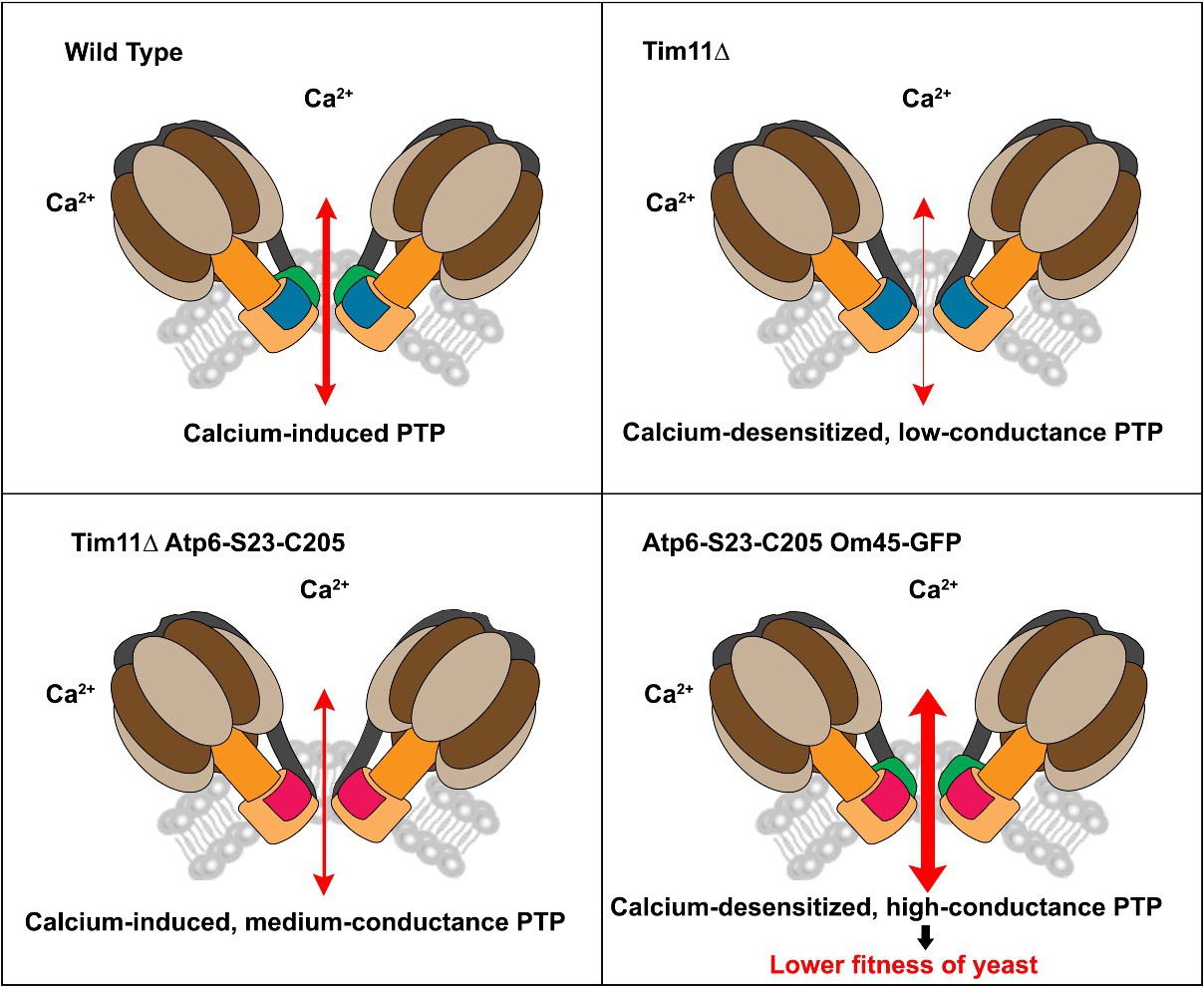Fig. 7. Illustration of the yPTP in Atp6-CSTC cells based on the presented results. Lack of the dimerization subunits of ATP synthase (marked in green) leads to calcium-desensitized low-conductance yPTP (the upper right panel). The substitutions Atp6-K80E or Atp6-P153S in subunit a in the Om45-GFP background also lead to calcium-desensitized channels but with normal conductance (Fig. S3B, [37]). The function of subunit e is essential in these cells, as its deletion was not possible. During TIM11 gene deletion selection of compensatory mutations occurred, resulting in C23S and T205C residue substitutions in the Atp6. This Atp6 variant (marked in purple) compensates for the lack of subunit e during yPTP formation, increasing its conductance partially in the Om45 background (the lower left panel) but above the normal conductance in the Om45-GFP background (the lower right panel). This high-conductance channel, induced by increased calcium and ROS levels, contributes to the heat sensitivity of Atp6-CSTC Om45-GFP yeast cells.
